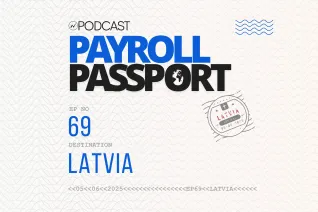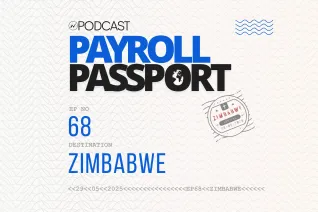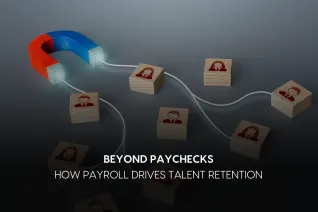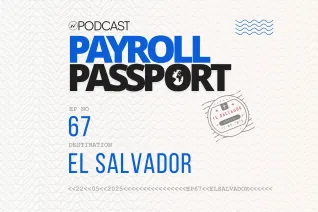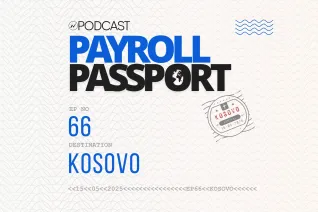Shadow Payroll: An Employers' Definitive Guide

In today's globalized world, businesses constantly expand their operations across borders, sending employees on international assignments. While these endeavors offer immense growth opportunities, they also bring a multitude of payroll and tax complexities.
One such complexity that is often heard about is “shadow payroll.” Here is a guide to navigating through the world of shadow payroll, understanding its intricacies, and tackling the challenges that come along the way.
What is Shadow Payroll?
Shadow payroll is a mechanism that allows the employer to meet their local payroll tax payments and reporting obligations by replicating or "shadowing" the home payroll compensation reporting. Shadow payroll calculates the appropriate tax and social security liabilities (in the host location) to be submitted to the host country authorities – while the employee continues to be paid from the home country payroll. Shadow payroll accounting plays a vital role in this process.
Shadow payroll is commonly used when an employee is sent on a short-term or long-term assignment to another country while retaining a home country employment contract. This way, the employee remains on the home country payroll and receives their net pay from there, but the employer also reports and pays their taxes and social contributions in the host country, as local laws and regulations require.
How Does Shadow Payroll Work?
Before we delve into the working of shadow payroll, here are some common terminology one must be familiar with:
- Home Country: Where the employee is usually employed and where their organization is based.
- Host Country: Where the international assignment happens, which can sometimes become the home country based on assignment duration.
- Social Security Agreement: It is an international deal to prevent double taxation of social security contributions, allowing employees to contribute to their home country's system while working abroad.
Shadow payroll creates a "shadow" or "mirror" of the home country payroll in the host country. It runs two parallel payrolls for an international assignee: one in the home country and the other in the host country.
Also Read | Streamlining Success: Benefits of an integrated HRIS and Payroll System
The employee's home country payroll remains active, ensuring that the employee receives compensation and pays taxes and social security per their home country's laws. The employer then applies for local tax rules and reliefs, converts the amounts into local currency, and calculates the tax gross-up, if applicable. The employer then pays the taxes and social contributions to the host country authorities on behalf of the employee and themselves.
The employer or the payroll provider in the host country calculates and reports all the payments and benefits paid in the home country and any other payments paid through relocation providers or paid directly in the host country. The employee does not receive net pay from the shadow payroll, as they are already paid from the home country payroll. However, they may receive a payslip or a tax certificate from the shadow payroll for their records. The employee may also need to file a tax return in both countries and claim a foreign tax credit or exemption to avoid double taxation.
Employers are responsible for reporting the necessary data and taxes to home and host countries, ensuring compliance with all tax jurisdictions.
Where challenges creep in
With multiple regulations, shadow payroll is prone to complexities requiring detailed knowledge and expertise.
Tax and data collection is one area that poses a major challenge in shadow payroll. The employers must collect accurate and timely data from various sources, such as home and host payrolls, relocation providers, expense reports, etc. They must also ensure that all payments and benefits are captured and reported consistently in both countries.
Tax is a critical component of payroll processing. While processing expat payroll, it is important to apply the correct tax rules and rates in both countries, considering tax jurisdictions, tax treaties, local tax reliefs, etc. Tax gross-up must also be calculated if applicable, which can vary depending on whether you use a current or prior-year method.
There are also several compliance risks. Non-adherence to local tax regulations can result in penalties and legal issues, making it critical to stay up-to-date with the latest tax laws in home and host countries.
Employers must be equipped with a holistic payroll provider who will ensure accuracy and compliance at all stages of payroll processing.
You may also want to check out | The Ultimate Guide to Cybersecurity for Remote Workforce
Shining light through the shadows
Tackling the complexities of shadow payroll requires a strategic approach. Employers must plan before sending an employee abroad to determine if shadow payroll is required and the implications for their business and employees.
It is also important to streamline the payroll process by implementing a system that can integrate both home and host country payrolls, facilitating the synchronization of compensation data and tax calculations.
Establishing a smooth data flow between the home and host payroll system and ensuring accuracy in reporting the data can help avoid data gaps and errors that could lead to penalties.
It also falls on the employer to periodically verify that both payrolls are in sync and that tax obligations are being met promptly and accurately. Monitoring the employee’s activities is vital as it helps the employer to update the payroll calculations accordingly if there are any changes in their income, location, duration, or scope of work.
Shadow payroll is a vital tool for managing a global workforce. By understanding what it is, how it works, and the challenges, employers can ensure their employees are paid correctly and compliantly in both countries.
However, managing it can be a complex and time-consuming process, especially for large and diverse global teams, especially without the support of a reliable payroll provider. While shadow payrolling might not be everyone’s cup of tea, it is something that organizations must look for in their payroll services provider.
But if you’re looking for a global payroll provider who can lighten the payroll process, Neeyamo’s Global Payroll solution is the answer. It is a holistic, tech-driven, and compliance-driven solution that seamlessly integrates with other systems and ensures reliable data exchange. It provides users with a hassle-free payroll experience regardless of their geographical presence.
Reach out to the payroll experts today for a free consultation at irene.jones@neeyamo.com.
Latest Resources
Stay informed with latest updates
If you're curious and have a thirst for knowledge pertaining to the HR, payroll, and EOR universe, don't miss out on subscribing to our resources.



